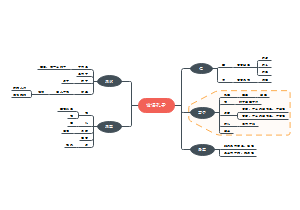导图社区 Key points for production
- 5
- 0
- 0
- 举报
Key points for production
这是一篇关于Key points for production 思维导图,主要内容包括:Production I,Production II,test,Final inspection and storage,Process documentation。
编辑于2025-09-02 16:02:00- 生产线
- 生产要点
- 储能产品开发流程分工
这是一篇关于储能产品开发流程分工的思维导图,展示了储能产品从前期准备到验证验收的完整开发流程,以及各流程环节中不同角色的具体分工,有助于明确职责。
- 研发中心
这是一篇关于研发中心的思维导图,展示了电气设计部的人员架构、各成员的职责范围以及对应的产品线,有助于明确工作分工和责任归属,提高部门工作效率和管理水平。
- Key points for production
这是一篇关于Key points for production 思维导图,主要内容包括:Production I,Production II,test,Final inspection and storage,Process documentation。
Key points for production
社区模板帮助中心,点此进入>>
- 储能产品开发流程分工
这是一篇关于储能产品开发流程分工的思维导图,展示了储能产品从前期准备到验证验收的完整开发流程,以及各流程环节中不同角色的具体分工,有助于明确职责。
- 研发中心
这是一篇关于研发中心的思维导图,展示了电气设计部的人员架构、各成员的职责范围以及对应的产品线,有助于明确工作分工和责任归属,提高部门工作效率和管理水平。
- Key points for production
这是一篇关于Key points for production 思维导图,主要内容包括:Production I,Production II,test,Final inspection and storage,Process documentation。
- 相似推荐
- 大纲
Key points for production and testing process control of hybrid and microgrid products
Production I
Incoming Inspection
Quantity acceptance
Parameter acceptance in technical agreement
Sampling report
battery pack
PAIR Pack Assembly Inspection Report
Test Report
MPS
装配点检表(MPAIR)Multifunctional Panel Assembly Inspection Report
Test Report
battery cluster
Assembly Inspection Report (SAIR) Stack Assembly Inspection Report
Test Report
Main control cabinet
装配点检表(CPAIR) Command Panel Assembly Inspection Report
Test Report
Production II
system integration
Cabinet Water Test Report (CWTR)
Final Assembly Inspection Report (FAIR)
test
1. Preparation work for the product to be tested
1.1 Verification of Electrical Manufacturing Standards for Orders (Electrical Department provides EU/UK/AU/UL wiring standard documents)
1.2 Control logic flowchart of the entire system (the software department provides logic flowcharts for each series of products)
1.3 Calibration parameter table for each series of battery products (provided and approved by the engineering department)
1.4 Test report templates for each product series and model (provided and approved by the engineering department)
1.5 Electrical schematic diagram, cable diagram, and topology diagram of the tested product (provided by the electrical design department)
2. Line inspection before startup
2.1 Insulation inspection, short circuit inspection, cable looseness inspection, and bolt connection point looseness inspection for each circuit (issued by the engineering department: pre start inspection checklist)
Tools used: multimeter, megohmmeter
2.2 External Cable Connections
Municipal power/diesel generators (quick plug and copper bar connection), loads (quick plug and copper bar connection), photovoltaics (DC MC4 or AC connection), remote start lines
2.3 Internal Cable Connections
Battery cable connection
3. Power on the system
3.1 The circuit is normal and ready for debugging
3.2 Abnormal circuit, improper wiring, production participates in rectification, electrical design participates in rectification
4. Product testing
4.1 Software Configuration
4.1.1 EMS software installation and confirmation
4.1.2 EMS software configuration and confirmation
4.1.3 Confirmation of correct software versions for each module
4.1.4 Communication confirmation of each module is normal (abnormalities need to be eliminated)
4.2 Test reports and logic control confirmation forms for each series and model (to be filled out and approved by the engineering department, based on the logic control provided by the software department, testing each logic item by item). The test report needs to reflect that each sub item has test data
Complete machine performance testing and functional testing (fill in the test report)
PCS discharge, AC/DC and MPPT charging
Confirm charging priority (built-in software logic)
Load and battery charging of string inverters
Power allocation (built-in software logic)
fire test
Temperature and smoke sensor start stop
air conditioning test
Start stop and built-in logic confirmation
Leakage protection test
Start Stop
Leakage detection inside the box
Start Stop
Fully charged
Indoor temperature: 1-hour temperature rise
fully loaded
Indoor temperature: 1-hour temperature rise
test tool
Conventional tools: CAN box/485 to USB/RJ45 to USB/4G card/4G router/oscilloscope
Unconventional tool: Supplier's own communication cable
IoT testing
Mobile APP Function Confirmation
remote monitoring
Key points of testing parameters for main components
PCS testing
Battery Mode
Sudden increase in load
0-50%
0-75%
0-100%
key parameters
Voltage fluctuation value
Frequency fluctuation value
recovery time
Sudden unloading of load
50%-0
75%-0
100%-0
key parameters
Voltage fluctuation value
Frequency fluctuation value
recovery time
Oil engine mode
Suddenly adding and uninstalling
Off grid switching
SOC high and low switching
Oil engine planning mode
Power mode
Timed charging and discharging
MPPT testing
Fully charged
Start Stop
AC/DC charger testing
Fully charged
Start Stop
Photovoltaic inverter testing
Fully charged
Start Stop
Abandoned light spot
UPS testing
Fully charged
start-stop control
External charging starts and stops
test tool
Conventional tools: CAN box/485 to USB/RJ45 to USB/4G card/4G router/oscilloscope
Unconventional tool: Supplier's own communication cable
5. Product testing completed and delivered
XXX Product Test Report
XXX Prototype Optimization Report
Structural/Electrical/Software/Information Management/Production Department Improvement
Submit to the General Office for approval
Final inspection and storage
XXX Product Quality Control Checklist
XXX Product Acceptance Countersign Report
Certificate of Quality
Process documentation
Each department is required to submit a "List of Production and Testing Documents for Hybrid and Microgrid Products" for approval
Completed by: Production/Engineering/Electrical/Software









